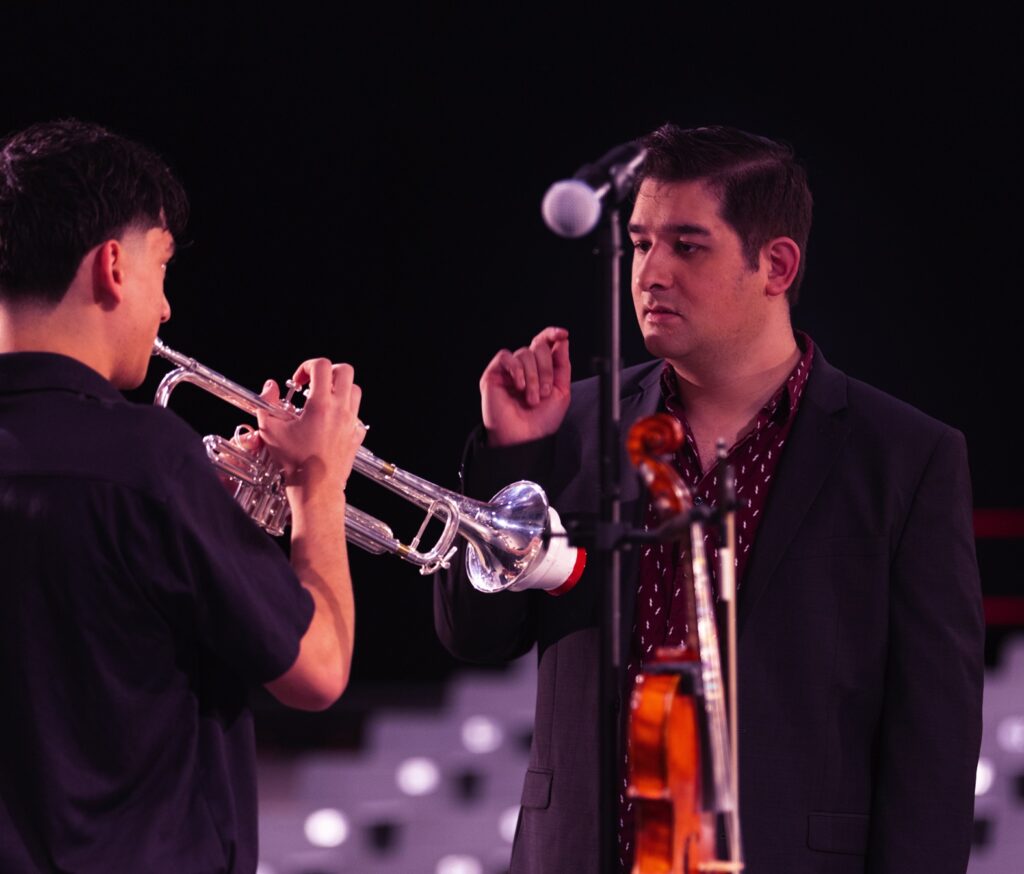Tagged Under:
Five More Steps to a Productive First Five Years
To be successful, young music educators should focus on recruitment, repertoire, networking, joining professional organizations and committing to lifelong learning.
In Part 1, I shared thoughts on five areas that are critical to set yourself up for success during your first five years of teaching: 1) balance personal life and build a strong early career, 2) effective strategies for job searches and interviews in education, 3) tools and strategies for staying organized, 4) build strong relationships as a band director and 5) parental support in a successful band program.
The first five years in the classroom are some of the most formative for a band director. These years shape not only the direction of your program but also your habits, philosophies and professional identity as a teacher. Success does not come from a single strategy but from a balanced approach that will help you build strong, student-centered programs while developing the skills and confidence needed for long-term success.
In Part 2, I will dig deeper on five additional areas to focus on during your early years:
- Recruiting students for a sustainable band program,
- Choosing music with purpose,
- Building a circle of advisors,
- Strengthening your career and program through professional organizations, and
- A lifelong commitment to learning.

1. Recruiting Students for a Sustainable Band Program
One of the first priorities for a new director is recruitment. It’s important to approach this process with intentionality rather than urgency. Sustainable growth begins by making band relevant to students. As the teacher you must help them see how music connects to their identity, their friendships and their aspirations. When students feel a sense of purpose, they are more likely to remain committed.
Equally important is the intentional effort to establish culture before expanding numbers. A positive, student-centered culture sets the tone for the program’s reputation within the school and community. Traditions, high expectations and a welcoming environment help shape how students and parents view the band. In the early years, directors may be tempted to measure success by the size of their ensemble, but focusing on quality over quantity provides a stronger foundation. A small group of motivated, high-achieving students can serve as role models, setting the standard for excellence as the program grows.
Supporting students beyond the band room is also essential. Directors who recognize and celebrate their students’ participation in athletics, theater and other extracurricular activities reinforce the message that students are valued as whole individuals. Rather than competing for their time, adopt a collaborative approach to sharing students, which fosters goodwill among colleagues and creates stronger loyalty among students. Attending a game, play or academic event communicates that you and the band program are invested in more than just musical outcomes.
At the heart of program growth should be the philosophy of building one student at a time. Directors should continually ask themselves: Are students running to the band room or are they running from it? The answer depends on the environment created each day. When students feel known, supported and challenged, the band room becomes a place they eagerly enter.
While the pressure to demonstrate rapid growth can be intense, success should not be measured by numbers alone. Recruitment matters, but relationships, culture and meaningful experiences will sustain a program far beyond its early years. By prioritizing relevance, support and excellence, directors lay the groundwork for a sustainable program.

2. Choosing Music with Purpose
Selecting music is one of the most important and often most challenging responsibilities of a band director. For small or developing ensembles, this task can feel even more daunting. The reality is that there is an abundance of high-quality literature available at every level. The challenge lies in finding repertoire that meets students where they are while still inspiring growth. Thoughtful music selection has the power to shape the overall culture and confidence of the program.
For directors of smaller groups, the key is to play to your strengths. Instead of worrying about what the ensemble lacks, consider the unique assets within your group. A talented clarinet section, a strong percussionist or a confident trumpet player can guide programming choices. Highlighting strengths creates musical success while boosting student morale by allowing them to shine.
Another important strategy is embracing flexibility through rewriting. It is not uncommon for small ensembles to encounter pieces with missing parts or unbalanced instrumentation. Rather than discarding strong repertoire, directors can adapt scores by reassigning lines, doubling essential voices or simplifying passages. While some directors may feel hesitant to alter a composer’s work, responsible rewriting ensures that students can access meaningful literature while maintaining musical integrity. This approach broadens programming options and prevents the group from being limited to only a narrow set of pieces. At the same time, directors should remember that good music exists at every level. It takes patience and persistence to locate works that are both musically rich and technically accessible, but they are out there.
Choosing repertoire is about balance. Students should be challenged but not overwhelmed. They should experience success while also encountering new technical and musical demands. Directors who take the time to align programming with ensemble strengths, make smart adaptations and seek out quality works that create meaningful experiences for their students. The right piece of music can do more than fill a concert program. It can build confidence, shape identity and inspire a sense of pride that resonates far beyond a single performance.

3. Building a Circle of Advisors
The first years of teaching can be both exciting and overwhelming, especially for new band directors who are balancing recruitment, instruction, performances and community relations all at once. One of the most effective ways to navigate these challenges is by developing a circle of advisors. This is a trusted network of professionals and mentors who can provide guidance, perspective and support.
An important starting point is your administration. Principals and assistant principals are not only your supervisors, they are also key advocates for your program. Maintaining open communication with them ensures that they understand your vision, needs and challenges. By involving them early and celebrating student successes together, directors can foster administrators who become long-term champions of the band program.
Equally valuable are the teachers within your school. Classroom teachers, coaches and fine arts colleagues can provide insight into students’ learning styles, school culture and scheduling challenges. Strong relationships with faculty also promote collaboration and goodwill, especially when students participate in multiple activities. Teachers who feel respected by the band director are often quick to return that respect and support.
Connections with other band directors are also essential. Whether across the district, at professional conferences or through state associations, these colleagues offer practical advice on literature, rehearsal strategies and program management. Many are facing, or have already faced, the same challenges you are encountering. Their experiences can shorten your learning curve.
Do not overlook the influence of your past teachers. Former band directors, professors and mentors have a unique perspective on your growth and professional journey. They can serve as a sounding board when you need reassurance or constructive feedback. Because they know your strengths and potential, their advice carries lasting value.
If you are fortunate to have educators in your family, lean on their wisdom. Even if they are not music specialists, they understand the broader challenges of teaching, work-life balance and building positive relationships with students and parents. Their perspective can ground you and remind you that the challenges you face are part of the larger profession.
Establishing a circle of advisors is a sign of professional strength. Directors who intentionally build and maintain these connections develop the resilience, perspective and wisdom needed to guide their programs toward long-term success.

4. Strengthening Your Career and Program Through Professional Organizations
For band directors in the early years of their teaching, professional involvement extends far beyond the rehearsal hall. Participation in music education organizations at the district, state and national levels provides invaluable opportunities for growth, networking and service. Choosing to be active in organizations benefits your personal career, strengthens your program and contributes to the profession as a whole.
At the district level, serving as a chairman or vice-chairman offers a meaningful way to develop leadership skills while supporting colleagues. These positions allow directors to influence event planning, adjudication and policy decisions that directly impact students. Even if you are not ready for an elected role, volunteering your time for district projects helps you gain insight into how events are organized and builds credibility among peers.
Another impactful area of service is assisting with auditions and other student-involved events. These activities are vital for student growth and require dedicated educators to ensure they run smoothly. By volunteering to tabulate scores, monitor rooms or help with logistics, directors demonstrate professionalism and commitment to students across the district. This involvement supports your community and models for your own students the importance of contributing beyond oneself.
Your state music education conference — for me, it’s the Alabama Music Educators Association (AMEA) Conference — provides one of the richest opportunities for professional development. Attending sessions, concerts and clinics connect directors with new repertoire, teaching strategies and emerging research. Presenting at these conferences or serving on a committee further elevates your professional profile and gives you a voice in shaping the future of music education in your state.
On a broader scale, membership in the National Association for Music Education (NAfME) offers access to resources, advocacy initiatives and national-level networking. Engagement at this level connects directors to the larger community of music educators, helping them stay informed about trends, policy and innovative practices.
Active participation in professional organizations is about contributing to something larger than your own classroom. Directors who give their time and energy to these organizations gain perspective, support and inspiration that directly benefit their students. By stepping beyond the band room and investing in the profession, you not only grow as an educator but also help ensure the continued strength of music education for future generations.

5. A Lifelong Commitment to Learning
One of the defining traits of successful music educators is their willingness to remain lifelong learners. The classroom and rehearsal hall demand constant adaptation. Directors who commit to keep learning not only sharpen their own skills but also enrich their programs and inspire their students.
School systems often provide professional development day, which should be seen as opportunities rather than obligations. Even when sessions are not directly music-related, they can offer valuable insights into classroom management, technology integration or student-engagement skills that are transferable to the band room. Take these sessions seriously and model a growth mindset for students and demonstrate professionalism to administrators.
Beyond the school district, university clinics provide access to specialized training. Whether through conducting workshops, instrumental pedagogy seminars or reading sessions, these clinics connect educators with experts in the field while offering hands-on strategies that can be applied immediately.
As mentioned earlier, your state conference is an essential professional development resource. Conferences bring together directors of all levels, fostering networking, inspiration and the exchange of practical strategies. Attending sessions, observing honor ensembles and engaging with exhibitors provide a broad view of the profession while offering direct takeaways for your classroom. Attending other state conferences can further expand your perspective. Each state has unique approaches, clinicians and featured ensembles, and exposure to different professional communities help directors avoid becoming isolated in their own region.
On the national stage, the Midwest Clinic International Band and Orchestra Conference in Chicago every December remains one of the premier gatherings for band directors worldwide. With world-class performances, sessions led by master teachers and unparalleled networking opportunities, Midwest provides inspiration and practical resources on a scale unmatched by most events. Even if travel requires significant planning, the professional renewal gained from attending Midwest can have a lasting impact.

In addition, never underestimate the value of books. From conducting texts to leadership and education research, reading offers ongoing professional development that is self-paced and deeply enriching. Building a professional library ensures continued growth long after conferences and clinics conclude.
In a field as dynamic as music education, complacency cannot be an option. Directors who actively seek out learning opportunities remain fresh, motivated and equipped to provide the best possible experiences for their students.
_______________________________________
Taken together, the five areas detailed above form the foundation for a thriving band program, especially in the crucial early years of teaching. Each element reinforces the others: strong recruitment is sustained by purposeful repertoire choices; wise mentors and advisors provide the guidance needed to navigate challenges; professional organizations open doors to service, networking and advocacy; and a commitment to lifelong learning ensures directors remain fresh and effective. By approaching the profession with intentionality, humility and a willingness to grow, directors not only build programs of excellence but also create environments where students are inspired to run toward the band room year after year.















